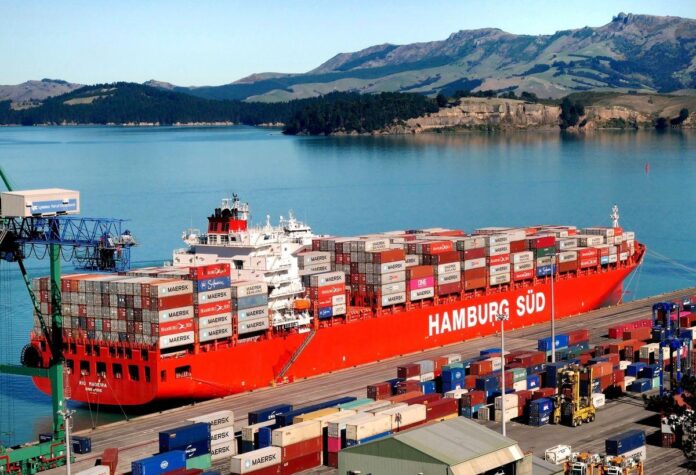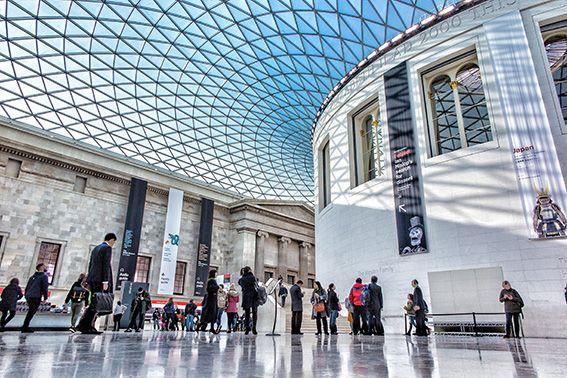Everyone now knows that air travel is not good for the planet. And it’s therefore no surprise to learn that the international transportation of artworks as air freight is one of the art world’s major generators of greenhouse gas emissions. Then, in addition, there is also all the waste generated by the huge volume of single use materials—especially plastics—used to pack all these artworks in transit.
This environmentally unfriendly double whammy that has led to a number of initiatives to try and reduce the environmental impact of all these plastic-wrapped, globe-trotting artworks and to encourage greener alternatives. No easy task, especially now that shipping is revving up in the wake of the pandemic. “The first thing is to try and do less of it,” declares Tom Woolston, the global head of operations at Christie’s, who admits that “shipping is our second biggest source of emissions after our buildings”. And while auction houses ramped up their digital action during Covid and continue to hold more online sales and viewings, there’s an equal awareness that screens are no substitute for an encounter with actual art.
A more sustainable alternative to air freight is to ship by sea. “Transporting artworks by air has on average 60 times the climate impact of moving the same distance by sea,” says Heath Lowndes, the managing director of the Gallery Climate Coalition (GCC), the international charity devoted to decarbonising the art world and promoting zero waste. Reducing the art world’s dependency on air freight forms a central plank of the GCC’s Sustainable Shipping Campaign, launched in May this year. This campaign sets targets for the majority of all international art freight to be transported by non air methods and with an overall reduction in volume by 2028. It also aims to make the majority of packing materials reusable or recyclable by 2026 and to phase out single-use plastics products with zero waste by 2030.
“These are very ambitious goals and they will be challenging for us to reach,” Lowndes admits, whilst emphasising they are also “absolutely necessary when you consider the climate catastrophe that we’re facing.” Prioritising multiple-user consolidations of shipments; petitioning shippers for standardised emissions data that would include carbon as well as monetary cost on all quotes and invoices; and insisting on recyclable or multi-use packaging and crates are among the campaign’s suggested actions to help achieve these aims.
The tide (ahem) is undoubtedly turning, with more environmentally-conscious galleries and artists now showing an interest in shipping works by sea, whereas in the past sea freight was only a last resort for works too heavy to put in an aeroplane. Artists Gary Hume and Gavin Turk are among those insisting their work always travels by boat rather than air and many logistics providers now offer sea freight as an option. Christie’s have also taken the unprecedented action of partnering with fine art shippers Crozier on a monthly sea freight route between London and New York, and another between London and Hong Kong every two months. Each shipment takes approximately 12 days and allows 60% of each container for Christie’s with the remaining 40% space made available for consolidated Crozier gallery client shipments.
However, the vast majority of freight continues to go by air. For, although it is undoubtedly more sustainable, sea freight is not without its problems. “There are storms, hurricanes and boats sink more readily than planes crash. Containers are old, sometimes leaky and can be prone to falling off ships—you can request they go below deck but there’s no guarantee,” says insurance broker Adam Prideaux. In order to mitigate these additional risks and in direct response to what is an increasing demand for more sustainable transportation practices, the Lloyd’s Market Association (LMA) Joint Specie Committee have recently drawn up a series of guidelines for taking out insurance for sea freight (available in full on the GCC website). According to Prideaux this initiative will help to facilitate safer and more art-friendly sea travel and it marks what he describes as “a massive turning point” in the art insurance market. “Those insurers who drag their feet over finding economical ways of insuring art by sea are going to find that they’re going to lose business,” he says. Overall the consensus across shippers and insurers is that the more demand there is to ship art by sea, the more art-friendly the sea freight industry will become—hurricanes not withstanding.
Another problem is one of time. Slower is more sustainable while tight deadlines and speedy deliveries come with a heavy carbon footprint. James Quirk, the lead marketing manager of Queen’s, the London-based fine art shipping and logistics provider, believes that a significant change to sea freight will only come when his clients alter their expectations of when they want their artworks to arrive. “Often people want to ship things on an extremely tight turnaround when actually they are only going into storage at the other end,” he says. “In these cases, what’s the rush?” Jason Bailer Losh, a director at the US-based art shippers Dietl International, agrees. “Air freight per se is easy to blame, the harder thing is to go into how you actually run your business and then change the way that you do things. That’s more difficult, and that’s what will make a real difference,” he says.
These views are also echoed by Hannah Wright, the registrar at Thomas Dane gallery, who is adamant that “planning forward, proposing a timeline way in advance and consolidating the transportation of works are the biggest challenge for us to become more sustainable as a gallery and as an industry.” Longer lead times, she feels, “will allow for more strategic logistics, more strategic packing and programming and a bigger overview of how we can reduce our emissions from that way forward.”
So art worlders, the message is loud and clear from all the links in the art supply chain: If you really want to slice those shipping emissions, then a genuine sea change is needed—pardon the nautical pun. A shift in mindset is required not just to launch artworks upon the more sustainable ocean waves, but also generally to slow down, get organised and think seriously about how necessary it is to be speedy. When transporting an artwork by sea can reduce its carbon impact by up to 95% it really is worth considering whether it is really necessary for it to be airbourne and to plan ahead to prevent it from being so. As per Woolston’s advice at the beginning of this piece, even before you book that boat, doing less really should be your first port of call.

























